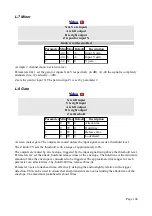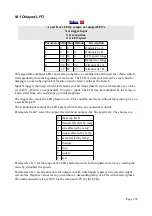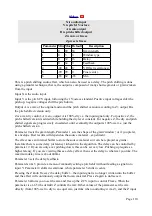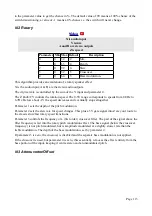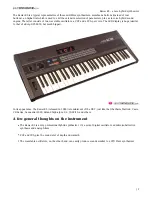
Parameter 6 applies a high pass filter to the reverb input. The range of cutoff frequencies is
approximately 3Hz to 1.6kHz.
L-2 Mono-to-Stereo Reverb
X is audio input
Y is feedback CV
A is left output
B is right output
Z is wet/dry or freeze
Z press is freeze
Parameter Min Max Default
Description
0
1
32
16
Size.
1
1
32
24
Feedback.
2
0
5
1
Character.
3
-1
31
8
Low pass filter.
4
0
12
0
Gain.
5
-33 32
-33
Wet/dry.
6
0
99
0
High pass filter.
A mono-to-stereo reverberation effect.
X is the audio input.
A and B are the stereo audio outputs. These are a mix of the input and the reverb output.
Z is a wet/dry control. At zero, the output is 100% dry i.e. the input signal with no reverb added.
For positive Z, reverb is added while holding the dry level constant. For negative Z, the dry and
reverb signals are progressively crossfaded, until eventually the output is 100% wet i.e. just the
reverberation signal.
Pressing the Z knob 'freezes' the reverb – the reverb does not decay, and the input signal is not
added into the reverb. Press Z again to unfreeze it.
Parameters 0 & 1 together control the reverb time. Input Y also affects the feedback.
Parameter 2 changes the reverb 'character' - it chooses between a number of options for the reverb
algorithm's internal parameters leading to different sounding reverbs (some quite natural, others
deliberately unnatural).
Parameter 3 applies a low pass filter to the reverb input. It does not affect the dry portion of the
signal.
Parameter 4 is a gain control for the reverb output, in dB. It does not affect the dry signal.
Parameter 5 allows Z to become a CV input for the freeze feature. When the parameter is from -32
to 32, this value is used to control the wet/dry balance, and the Z input becomes a freeze trigger.
The reverb freezes when Z goes above approximately 1V and unfreezes when Z falls below
approximately 0.5V.
Parameter 6 applies a high pass filter to the reverb input. The range of cutoff frequencies is
approximately 3Hz to 1.6kHz.
Page 99




















